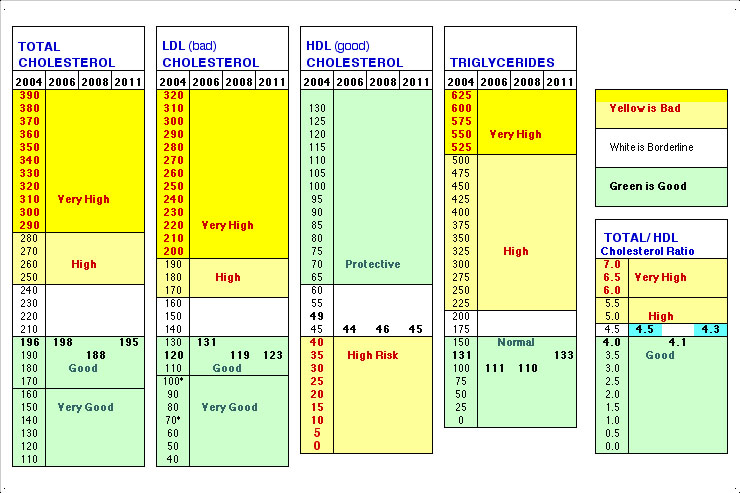

Some cholesterol tests don't require fasting, so follow your doctor's instructions. You're generally required to fast, consuming no food or liquids other than water, for nine to 12 hours before the test. You might have soreness or tenderness around the site where your blood is drawn. There's little risk in getting a cholesterol test. People undergoing treatment for high cholesterol require regular cholesterol testing to monitor the effectiveness of their treatments.

Have a family history of high cholesterol or heart attacks.More-frequent testing might be needed if your initial test results were abnormal or if you already have coronary artery disease, you're taking cholesterol-lowering medications or you're at higher risk of coronary artery disease because you: People over 65 should receive cholesterol tests annually. The NHLBI recommends that cholesterol screenings occur every 1 to 2 years for men ages 45 to 65 and for women ages 55 to 65. High triglyceride levels are associated with several factors, including being overweight, eating too many sweets or drinking too much alcohol, smoking, being sedentary, or having diabetes with elevated blood sugar levels.Īccording to the National Heart, Lung and Blood Institute (NHLBI), a person's first cholesterol screening should occur between the ages of 9 and 11 and then be repeated every five years after that. When you eat, your body converts calories it doesn't need into triglycerides, which are stored in fat cells. Triglycerides are a type of fat in the blood. This is called the "good" cholesterol because it helps carry away LDL cholesterol, thus keeping arteries open and your blood flowing more freely. High-density lipoprotein (HDL) cholesterol.These plaques sometimes rupture and can lead to a heart attack or stroke. Too much of it in your blood causes the buildup of fatty deposits (plaques) in your arteries (atherosclerosis), which reduces blood flow. Low-density lipoprotein (LDL) cholesterol.This is a sum of your blood's cholesterol content. A complete cholesterol test is done to determine whether your cholesterol is high and to estimate your risk of heart attacks and other forms of heart disease and diseases of the blood vessels.Ī complete cholesterol test includes the calculation of four types of fats in your blood: Exercise can be very helpful in 2014, a review found exercise could help raise HDL-C levels, particularly resistance training, offsetting any rise in non-HDL cholesterol.High cholesterol usually causes no signs or symptoms. Your doctor may prescribe a statin but will recommend you follow healthy lifestyle advice (see above) too, along with losing weight and quitting smoking if needed. So if yours is high, you have a higher risk of developing CVD. What should I do? This reading has been shown to help calculate your risk of CVD more accurately than before. What’s healthy? It should ideally be 4 mmol/L or less.

So, all the bad cholesterols added together, including your LDL cholesterol. Non-HDL cholesterol - this is your total cholesterol reading, minus your HDL-C level reading. Your GP may also prescribe statins, a group of medicines that help lower LDL-C in the blood, particularly if you have FH or other risk factors such as your age, diabetes, smoking or high blood pressure. If your LDL-C level is high for other reasons, changing your diet and exercise regime can help get your bad cholesterol back on track. Others in your family may have the same condition, so it’s important to get a proper diagnosis so everyone can get the right treatment. What should I do? If your LDL-C reading is outside healthy levels, speak to your GP - if it's above 4.9 mmol/L you could have familial hypercholesterolaemia (FH), a form of inherited high cholesterol that needs treatment and lifestyle changes. What’s healthy? It should ideally be 3 mmol/L or less, or 2mmo/L if you’re high risk. LDL cholesterol (LDL-C) The 'bad' cholesterol


 0 kommentar(er)
0 kommentar(er)
